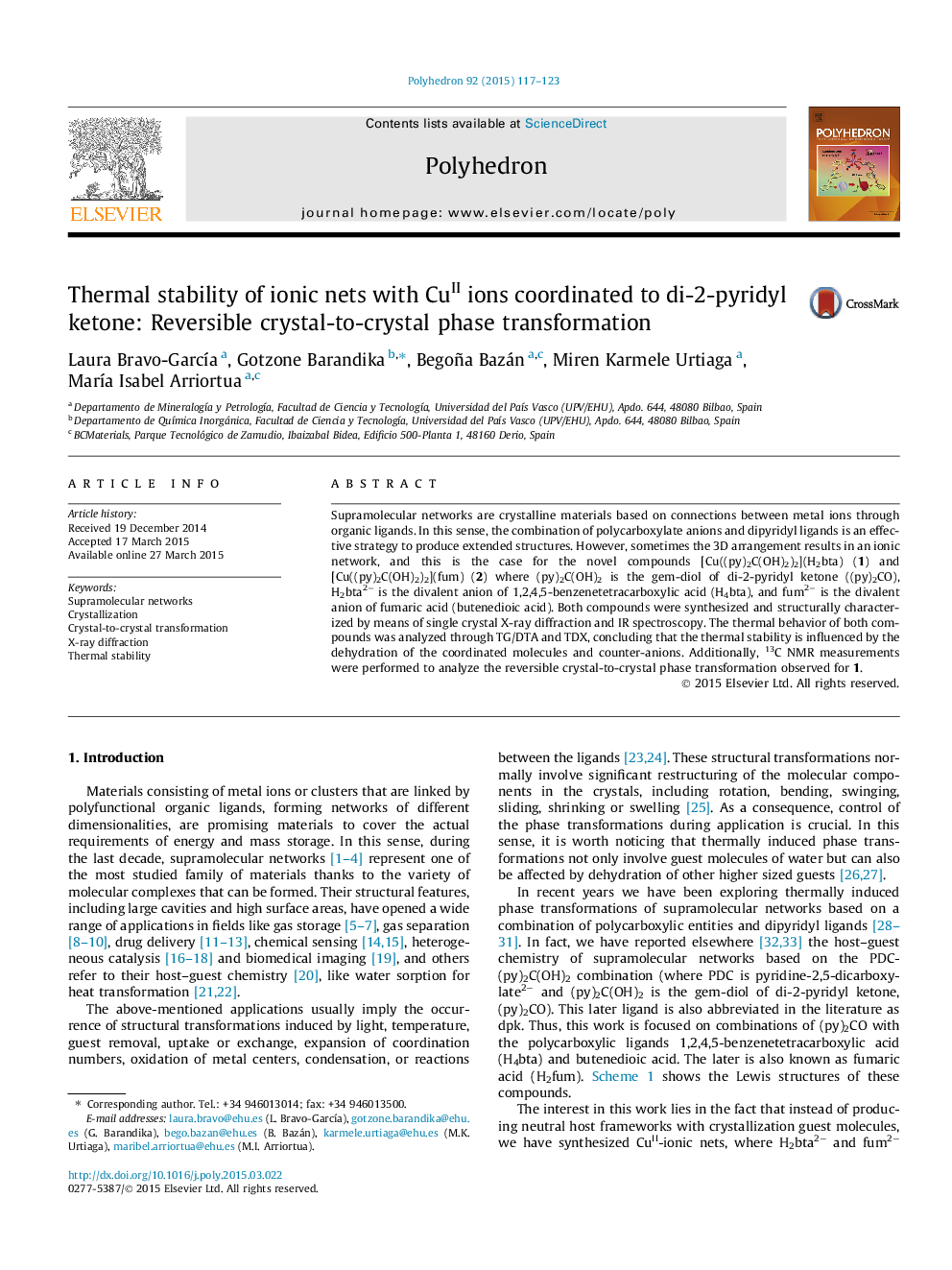| Article ID | Journal | Published Year | Pages | File Type |
|---|---|---|---|---|
| 1336061 | Polyhedron | 2015 | 7 Pages |
Supramolecular networks are crystalline materials based on connections between metal ions through organic ligands. In this sense, the combination of polycarboxylate anions and dipyridyl ligands is an effective strategy to produce extended structures. However, sometimes the 3D arrangement results in an ionic network, and this is the case for the novel compounds [Cu((py)2C(OH)2)2](H2bta) (1) and [Cu((py)2C(OH)2)2](fum) (2) where (py)2C(OH)2 is the gem-diol of di-2-pyridyl ketone ((py)2CO), H2bta2− is the divalent anion of 1,2,4,5-benzenetetracarboxylic acid (H4bta), and fum2− is the divalent anion of fumaric acid (butenedioic acid). Both compounds were synthesized and structurally characterized by means of single crystal X-ray diffraction and IR spectroscopy. The thermal behavior of both compounds was analyzed through TG/DTA and TDX, concluding that the thermal stability is influenced by the dehydration of the coordinated molecules and counter-anions. Additionally, 13C NMR measurements were performed to analyze the reversible crystal-to-crystal phase transformation observed for 1.
Graphical abstractIonic nets with CuII ions coordinated to di-2-pyridyl ketone: reversible crystal-to-crystal phase transformation.Figure optionsDownload full-size imageDownload as PowerPoint slide
